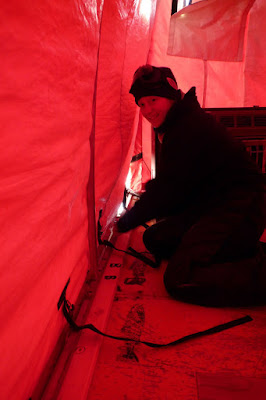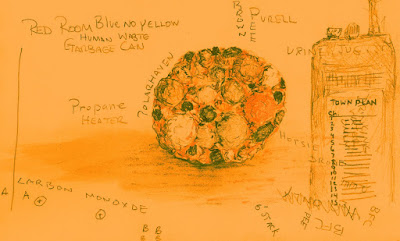Making uniformly wide (= safe) dive holes through the sea ice in Antarctica has always been a major challenge. For example, at our research sites at Explorers Cove, the sea ice is usually 8-21 feet (roughly 3-7 meters) thick, and layered with wind-blown sediment from the Taylor Valley - factors that create a host of problems. Blasting holes with dynamite worked well in the past, but in this post-9/11 world it is a logistical nightmare to use explosives. The only reasonable option is to slowly melt a dive hole using a Hotsie. Unfortunately, the Hotsie is a gizmo that wasn't designed for this purpose: it's a glorified carpet steam cleaner!
Keeping a Hotsie functional for the 2-3 days needed to melt a hole requires vigilance (and a toolkit). Recently, we've resorted to belief in "order" in order to keep it working.
To wit:




Now that we align its components in orderly ways, with expression of great love and devotion to the Hotsie, we are cranking out perfect dive holes. (Well, almost 50% of the time.)
I'm thinking of starting a new religion ...









